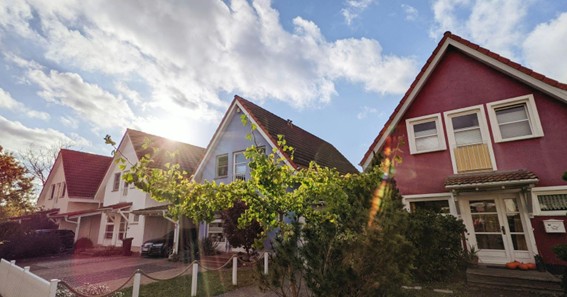Affordable housing is a pillar of economic stability, social well-being, and overall community health. As illustrated by Axel de Chevron, when people have access to secure and reasonably priced homes, they can focus on other important aspects of life, such as education, healthcare, and career growth. Without affordable options, individuals and families face the risk of displacement, financial strain, and long-term instability.
Addressing this issue requires a combination of innovative policies, public and private sector involvement, and community-driven solutions. By ensuring that housing remains within reach for all income levels, communities can foster long-term growth, enhance social cohesion, and create opportunities for future generations.
Why Affordable Housing Matters
Affordable housing provides individuals and families with a stable place to live, ensuring they can meet other essential needs without financial strain. When housing costs are manageable, people can allocate more of their income toward food, healthcare, and education, improving their overall quality of life. Without affordable options, many are forced to live in overcrowded or substandard conditions, which can negatively impact their well-being.
Communities also feel the effects when housing becomes unaffordable. High housing costs can lead to displacement, forcing long-term residents to relocate and weakening neighborhood connections. When families are able to remain in one place, schools, businesses, and local organizations benefit from a more engaged and stable population. In areas with sufficient affordable housing, crime rates tend to be lower, and social cohesion is stronger.
Economic and Social Stability
Affordable housing plays a crucial role in financial security, allowing families to cover basic needs without constant worry about rent or mortgage payments. When people can afford their homes, they have more disposable income to spend within their communities, supporting local businesses and fostering economic growth. Stable housing also enables individuals to maintain steady employment, reducing job turnover and increasing workplace productivity.
Beyond financial benefits, accessible housing options help build strong social ties. Neighborhoods with long-term residents tend to develop deeper connections, leading to better civic engagement and collective problem-solving. When people feel secure in their housing, they are more likely to invest in their surroundings, participate in community initiatives, and look out for their neighbors.
Cities that prioritize affordable housing often experience lower homelessness rates and reduced reliance on social services. When individuals and families have stable living conditions, they require fewer emergency interventions, easing the burden on public resources. A well-balanced housing market benefits not just those in need of affordable options but also the broader economy.
Health and Well-Being
The connection between stable housing and health is undeniable. Families who don’t have to worry about eviction or unsafe living conditions experience lower rates of anxiety and depression. A stable home environment also fosters healthier routines, from regular meals to consistent medical care, contributing to overall well-being.
Quality housing impacts physical health as well. Poor living conditions—such as mold, pests, or inadequate heating—can lead to respiratory issues, infections, and other chronic illnesses. Children growing up in unsafe housing are more susceptible to developmental delays and long-term health complications.
Education and Future Opportunities
Stable housing directly influences a child’s ability to succeed academically. When families are not forced to move frequently due to rising costs or eviction, children can attend the same schools, build lasting relationships, and focus on their education without constant disruptions. Consistency in schooling leads to better academic performance, higher graduation rates, and career prospects.
Beyond academics, a secure living environment fosters personal development and confidence. Children who grow up in stable homes are more likely to participate in extracurricular activities, form meaningful friendships, and develop the skills needed for long-term success. Having a safe place to study and rest also plays a major role in cognitive and emotional growth. A sense of security at home allows young individuals to explore their interests, engage in creative pursuits, and develop crucial life skills.
Affordable housing options support not only students but also educators and school systems. Schools in areas with stable housing populations experience fewer enrollment fluctuations, allowing teachers to build stronger relationships with students and tailor their instruction more effectively. A well-supported educational system benefits entire communities by preparing the next generation for meaningful careers and leadership roles.
Challenges and Solutions
Expanding access to affordable housing comes with notable challenges, including rising construction costs, zoning restrictions, and limited public funding. Many communities struggle to balance development with affordability, often leading to housing shortages that disproportionately affect lower-income families. Without proactive policies and investments, the gap between housing demand and availability continues to grow.
Creative solutions are emerging to address these issues. Public-private partnerships have led to developments that incorporate affordable housing alongside market-rate units, ensuring economic diversity in neighborhoods. Some cities have adopted zoning reforms to encourage the construction of multi-family housing, while others have implemented tax incentives for developers who prioritize low-cost housing alternatives.
Local organizations and community-driven efforts also play a crucial role in making housing more accessible. Land trusts, co-housing models, and nonprofit housing initiatives have provided alternatives for families struggling to find stable living situations. When governments, businesses, and residents collaborate, they create solutions that address housing needs while fostering economic and social growth.

